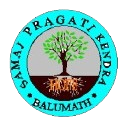
~ADIVASI WOMEN HEALTH AT A GLANCE~
One of the poorest and most marginalized communities, the tribal population continues to fight extreme levels of health deprivation, with women and children being most vulnerable. Milk and fruits for sustenance are unthinkable and unaffordable for adivasi women. Most of the meal is served for male members the bread earner and woman has just PANI-BHAAT (a dish of stale or left over rice and water). And saag made with dry leaves.
Health Status of Adivasi Women due to poverty, fruits and milk for sustenance is unthinkable and unaffordable. Surprisingly most of the food is served to the male members, who are the bread-earners. As a result, the women have to survive on paani-bhaat (a dish made of stale or leftover rice and water) and saag made from dry leaves. 80 per cent of the tribal women weighed less than 50 kg.
“Adivasi women don’t eat nutritious food during pregnancy and also don’t take iron pills on a regular basis because it is a myth amongst them that they will have problems at the time of delivery of the child due to the pill”. 85% expectant mothers are unaware of health and nutrition issues. According to SRS 2018, for every 100,000 live births, 185 mothers die during pregnancy, childbirth and in the post-mortem period.
68.5% children ages 6-59 are found anemic, 85.3 % Adivasi women age 15-49 suffer from anemia. 76% adolescent girls age 15-25 are anemic and less weight and 77% without proper sanitation. Infant mortality is 44 deaths per 1,000. UN Children Fund also states that Adivasi children are worse nourished in India.
